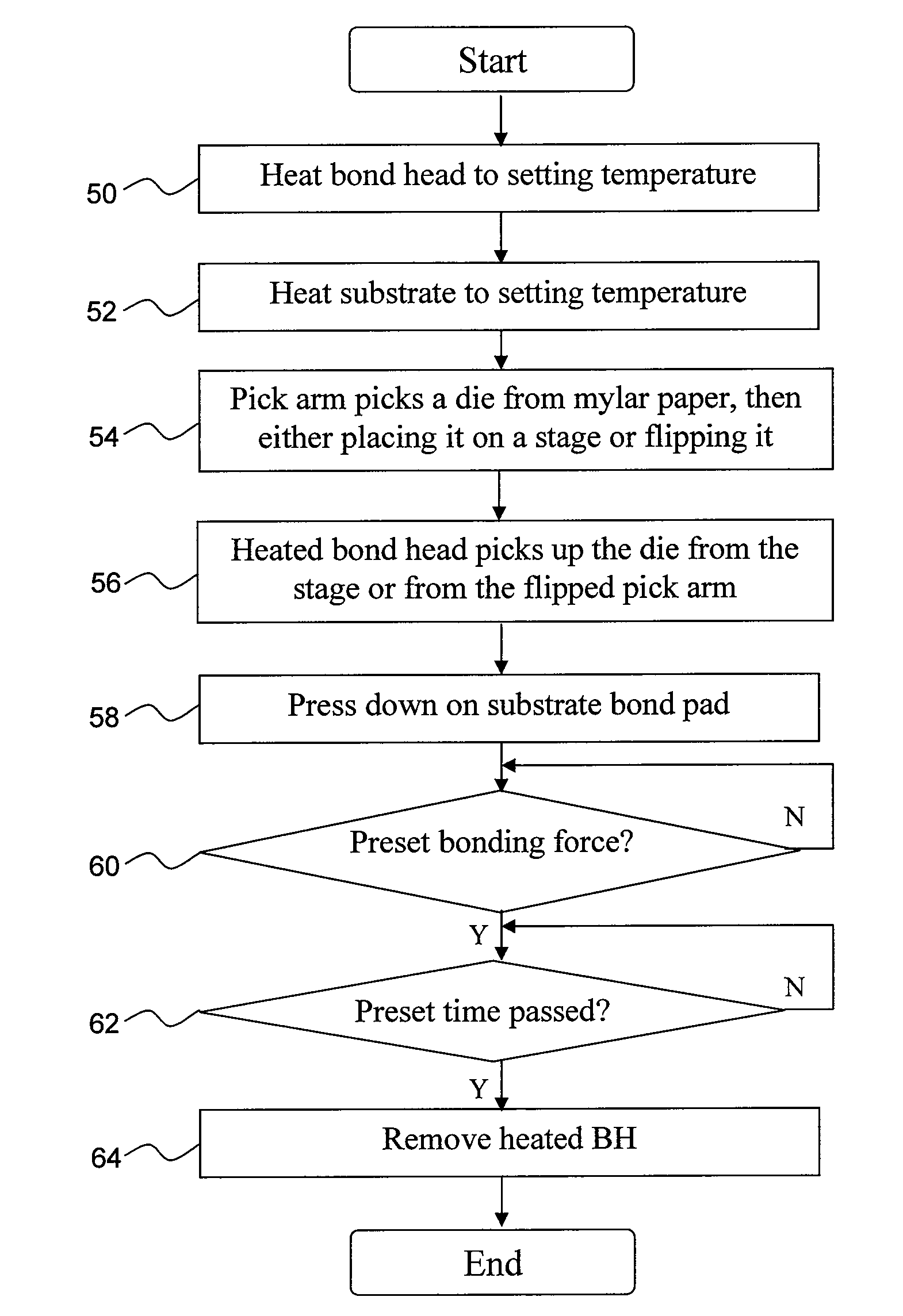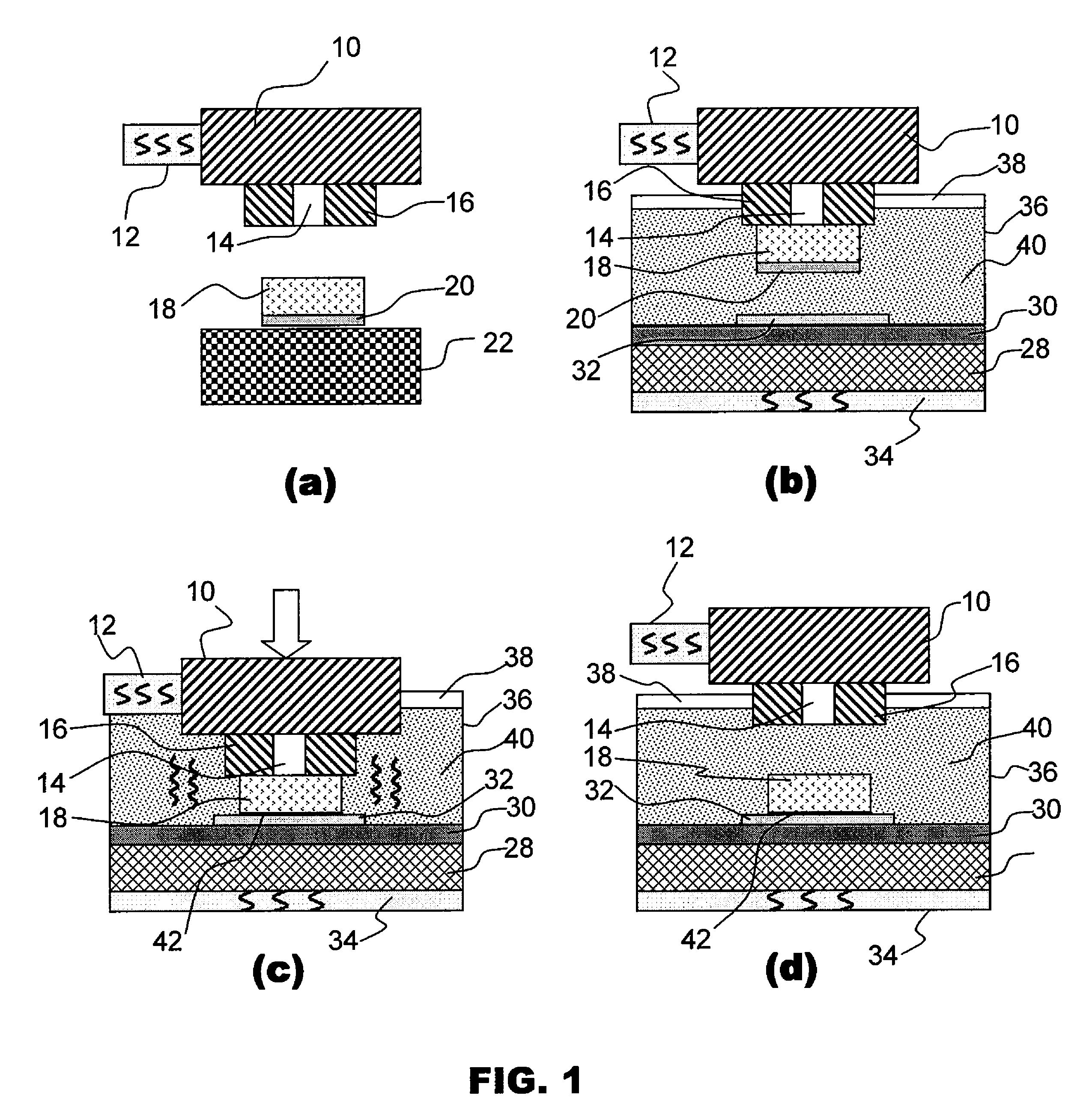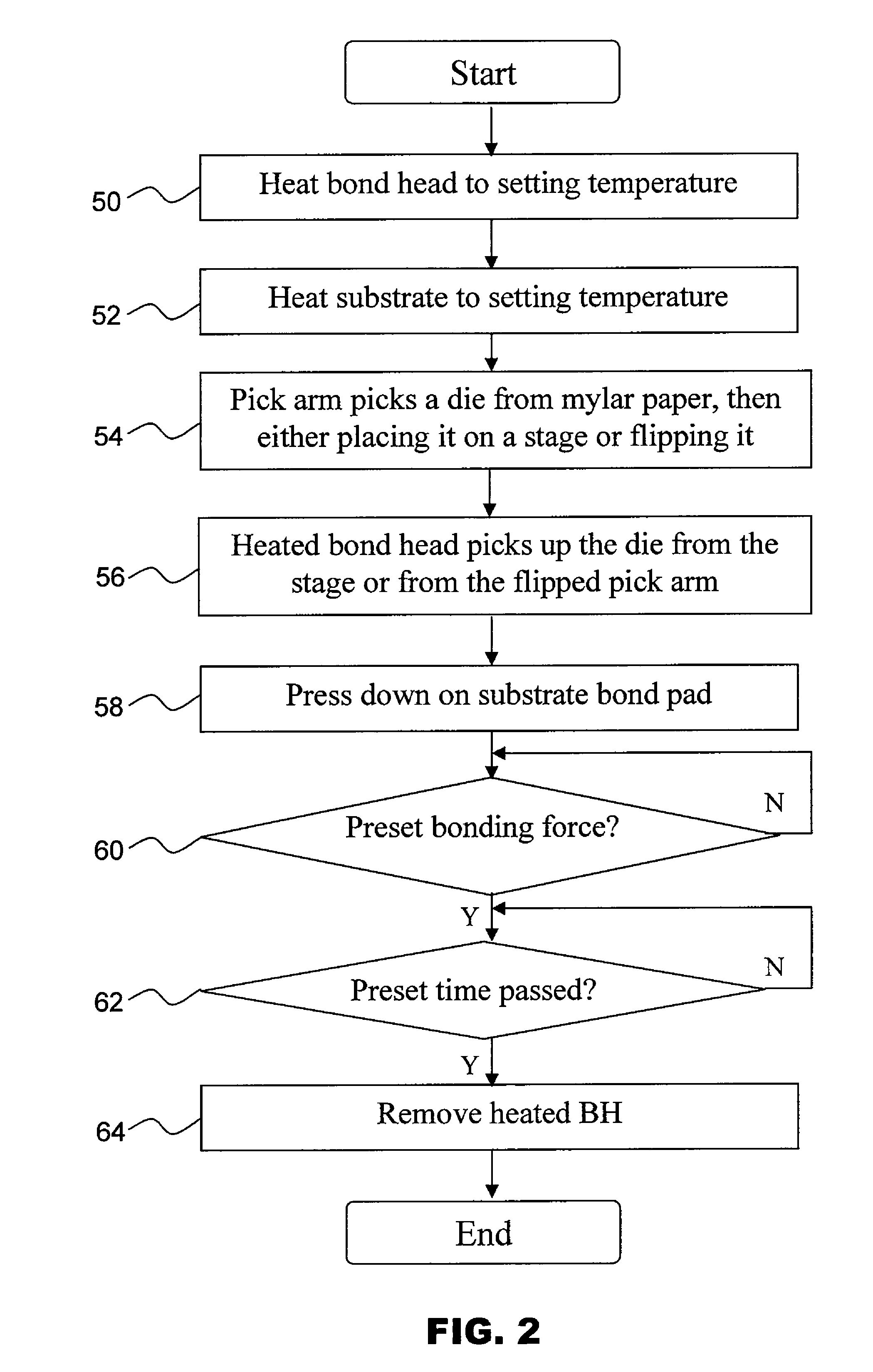Direct die attach utilizing heated bond head
a technology of heat-sealed bonding and die-attaching head, which is applied in the direction of solid-state devices, manufacturing tools, and so on, which can solve the problems of reducing the efficiency of the process,
- Summary
- Abstract
- Description
- Claims
- Application Information
AI Technical Summary
Benefits of technology
Problems solved by technology
Method used
Image
Examples
Embodiment Construction
[0014]FIGS. 1(a) to 1(d) illustrate schematic side views of a die bonding operation according to the preferred embodiment of the invention successively demonstrating the process steps for mounting a die onto a substrate.
[0015]In FIG. 1(a), a bond head 10 is first heated to a bond head setting temperature, T1. The bond head 10 in the present embodiment has a heating element 12 and a vacuum system associated with it. The vacuum system (not shown) is used to maintain a negative pressure in the suction hole 14 of the die collet 16. The dimension of the suction hole 14 is less than the size of a die 18, which may be a High Brightness or other LED chip. Heat generated from the heating element 12 of the bond head 10 is conducted to the die collet 16 and subsequently to the die 18 when the bond head 10 is holding the die 18 by collet suction.
[0016]The die 18 comprises a solder layer, such as eutectic layer 20 at its bottom, which has a melting point Tm. The bond head setting temperature T1 ...
PUM
| Property | Measurement | Unit |
|---|---|---|
| bond head setting temperature T1 | aaaaa | aaaaa |
| setting temperature T2 | aaaaa | aaaaa |
| melting point Tm | aaaaa | aaaaa |
Abstract
Description
Claims
Application Information
 Login to View More
Login to View More - R&D
- Intellectual Property
- Life Sciences
- Materials
- Tech Scout
- Unparalleled Data Quality
- Higher Quality Content
- 60% Fewer Hallucinations
Browse by: Latest US Patents, China's latest patents, Technical Efficacy Thesaurus, Application Domain, Technology Topic, Popular Technical Reports.
© 2025 PatSnap. All rights reserved.Legal|Privacy policy|Modern Slavery Act Transparency Statement|Sitemap|About US| Contact US: help@patsnap.com



